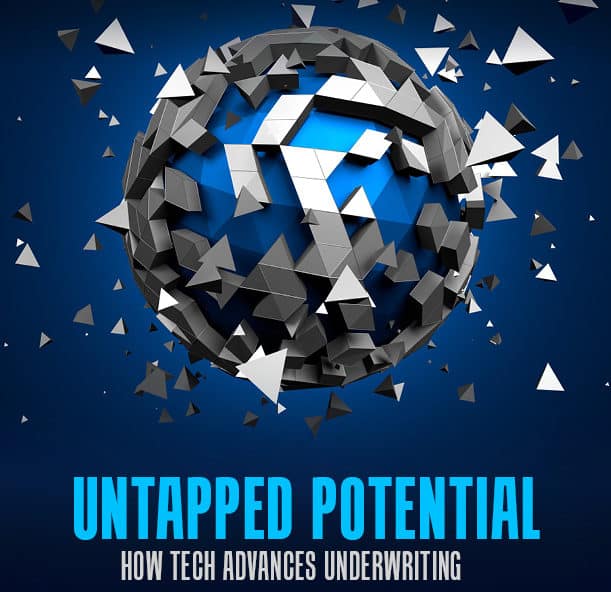From the outside looking in, underwriting may seem like the simplest and most basic of tasks, but this is not always the case. As the business of originating loans evolves beyond the credit report and calculator, lenders are reestablishing how they find the sweet spot between turning a profit and extending credit on responsible, competitive terms.
With the optimistic promise of higher origination volume and lower credit losses, lenders race to adopt the latest technology and tools to propel their businesses forward.
No longer should “artificial intelligence” and “alternative data” be reduced to buzzwords in auto finance. From captives to small independent financiers, lenders across the industry are incorporating such technologies into credit decisioning, strengthened by automation, and have already started to invest millions of dollars in future enhancements to remain agile in an industry that’s quickly evolving.
“You can’t use a static scorecard in a fluid and dynamic world,” said Evan Chrapko, chief executive of Trust Science, an AI-backed credit-decisioning software provider. “You can’t use techniques that are prehistoric if you’re venturing forward into new and bigger markets or seeking more fruitful land.”
Westlake Financial Services, for one, is increasing its budget spend for alternative data and implementing optical recognition technology into its decisioning framework. Southern Auto Finance Co. (SAFCO) is currently training AI and machine learning models in its underwriting process, and Tricolor Auto Acceptance is testing fraud detection and income verification tools backed by artificial intelligence.
Among the top 20 Big Wheels Auto Finance companies, Ford Motor Credit, TD Bank, USAA and Wells Fargo have spent the past year exploring and investing in machine learning, AI and automation for underwriting.
Innovation in credit decisioning introduces a wealth of potential: it helps reach new customers, price risk more efficiently, speed up manual processes, and provide lift in other areas of the business, like servicing, collections and portfolio forecasting. But, as technological advances in underwriting capture the industry’s attention, state and federal regulators remain steadfast in their tight monitoring of the space, too.
Discovering insights in the trends
Leveraging machine-learning models was a clear decision for Tricolor and Lendbuzz, which rely on the tech to target and underwrite credit-invisible and thin-credit borrowers.
Boston-based Lendbuzz, which launched in 2016, uses machine learning to parse alternative data based on educational and employment history, earning potential and cash flow. With this method, Lendbuzz can “reveal the true credit risk of our client,” said Chief Technology Officer Dan Raviv, who noted that borrowers are often foreign-born residents with short U.S. credit histories.
Tricolor benefits from greater pricing precision and improved portfolio economics, President and Chief Operating Officer Don Goin told AFN. For 2019, the AI algorithm that supplements the lender’s traditional scoring models contributed 3% of the company’s origination volume growth while reducing the net credit loss, he said.
“Since adding AI, we’ve seen a positive shift in credit quality and a widening of our available market,” Goin added, noting the company is currently opening additional retail locations, primarily in California. He said Tricolor uses a hybrid model in which the base model controls for risk and the AI model improves the pricing.
“We could probably see more impact from the model if we just let it run, but we constrain it for proper risk management,” Goin said.
Like Tricolor, AI-based software vendor ZestAI builds tools designed to operate alongside standard models. Chief Credit Analytics Officer Seth Silverstein listed models such as decision trees, which outline possible consequences in a tree-like graph, and neural networks, designed to simulate a human brain’s network of neurons and can be used for segmentation and categorization.
“Those kinds of tools are very good at working with large amounts of data, which I think is key in the auto industry right now,” added Silverstein, who was previously Ally Financial’s chief modeling and analytics officer.
But not all lenders are convinced the technology’s benefits are worth the investment. A tightening marketplace with stiff competition is pushing SAFCO to test artificial intelligence and machine learning algorithms in its decisioning process. “We need to do something to get a leg up and try to increase our penetration with dealers,” said SAFCO Chief Executive George Fussell. “This business is not for the faint of heart anymore, and operating expenditure is a competitive disadvantage for a small company.”
The potential upgrade from the subprime lender’s credit bureau-based scorecards will hinge on whether the costs of the technology offset the delinquencies, Fussell said.
“The jury’s still out. If I’m lowering my margin, which I really can’t afford to do at a smaller company, can I be assured that the bad debts and overall cost of delinquency will be offset?” Fussell told AFN, noting there won’t be a clear indication of this until July.
Reading between the lines
With more consumer data available than ever before, navigating the variables to use in machine learning modeling can be arduous. For instance, standard models may have as many as 20 variables, whereas machine learning models may have 1,000 variables or more, ZestAI’s Silverstein noted.
Still, diving into the pool of alternative data opens the door for increased approvals. For full-spectrum lender Westlake Financial, which is in aggressive growth mode, the business hinges on approving loans supported by robust risk analysis.
As such, Westlake is putting a greater emphasis on alternative data, Senior Vice President of Originations Kyle Dietrich told AFN. This year, the Los Angeles-based lender is budgeting $5 million for alternative data, up from $1 million three years ago.
“It’s not the spend for spending’s sake, it’s that we found value in it,” Dietrich said. In fact, Westlake’s rigorous data set enables the company to react to losses before they occur. “Certain indicator reports can tell you, ‘This segment doesn’t look good based on early loan performance,’ so you better make an adjustment,” he explained. Westlake, for example, adjusts its decisioning framework multiple times within any given week, depending on portfolio performance.
Ford Credit continues to add data points to its machine learning model for credit decisioning, which launched at the end of 2018, according to spokeswoman Margaret Mellott. “While our traditional models perform very well, the newer models are more predictive, allowing us to better assess risk in deciding which contracts to purchase,” she said. “Technology is helping us think about new ways to work, new data to use and potential ways to finance more people, such as customers with limited credit histories.”
Meanwhile, digitization plays a larger role in document uploading and onboarding capabilities. Future opportunities, however, lie in alternative data sources for credit attributes that are mature and stable enough to model, Tricolor’s Goin said.
“In the subprime population, employment and income verification are still the long poles in the tent,” Goin said. “If everyone had a bank account and worked at traditional employers, automation would be very easy. As time goes on, I expect we will see more data providers become mainstream through the credit rating agencies.”
Already, industry players are looking to social media and public websites for credit attributes unavailable from traditional credit bureaus. Trust Science, for one, leverages any public information on the internet, such as LinkedIn or news articles, in its assembly of consumer data, Chrapko said.
The pursuit of speed and scale
As lenders add verification capabilities and alternative data, automation will prove paramount to maintaining the industry standard of quick and efficient credit decisioning.
Westlake Financial is implementing optical character recognition (OCR) technology with machine learning to calculate income, validate stipulations and verify documentation, Dietrich said. The process, which manually would take multiple people hours, will only take minutes with the new tech, he said. With the OCR capabilities, Westlake won’t necessarily have to add headcount as the company grows, he added.
“This technology doesn’t supplant the human in the experience, but it takes the lion’s share of the easy stuff so the analyst can take care of outliers or anomalies,” Dietrich said. The product will roll out this month on certain application fields, such as income and proof of residence, with the goal to implement the technology on a more regular basis across the entire loan application by year end, he added.
Meanwhile, the industry can expect to see Wells Fargo invest heavily in automation tools such as e-contracting, e-funding and auto-decisioning to remove manual processes that create slowdowns, Executive Vice President Jerry Bowen previously told AFN.
Still, automated processes should always involve human monitoring and checkpoints to validate information and continuously train the models so that the desired benefit is realized, lenders across the board told AFN.
Treading carefully
Lenders on the forefront of decisioning capitalize on a mix of tools to price loan terms that benefit both the creditor and borrower, often combining multiple components to achieve the best results. But there are compliance risks to weigh, and regulators such as the Consumer Financial Protection Bureau have spotlighted AI and machine learning in underwriting as an area of focus.
“Despite AI’s potential to expand access to credit, uncertainty about how AI fits into the existing regulatory framework may be hindering adoption of the technology, especially for credit underwriting,” CFPB Director Kathy Kraninger said at a mortgage industry conference in November 2019. “Ultimately, this uncertainty is not beneficial to the marketplace,” she said, noting the CFPB has policies in place to address innovation uncertainty.
Already, lawmakers in California and New York have submitted proposals to expand enforcement over fintech companies and their partners. Specifically, California Gov. Gavin Newsom’s proposed legislation would expand the state’s reach in policing unfair, deceptive or abusive lending practices. Meanwhile N.Y. Gov. Andrew Cuomo is seeking to expand the scope of the Department of Financial Services by eliminating state exemptions, putting all consumer products or services under the umbrella of the CFPB’s legal enforcement authority.
The key with using advanced analytical models to price risk is “explainability,” the concept of tracking how AI- and machine learning-based models get to the results they produce. “One of the things that machine learning tools have shown is that they are very good with working with the data, but they’re very hard to explain,” said ZestAI’s Silverstein.
Yet, despite the regulatory uncertainty, leveraging emerging technology and data in underwriting can have a positive impact on business performance in areas outside of pricing risk. For instance, trending data can offer insights on a customer’s credit score.
“Not all 700 Fico scores are alike,” Silverstein said. “Some may be going up over the last couple months, some may be going down, and [trending data] gives you a lot of information about the borrower instead of just saying they are 700.”
Trending data also improves portfolio forecasting, as well as collections and servicing. “Instead of going after certain accounts with low credit scores, if the information shows that the credit score is getting better, that means they’re paying on other accounts and they’ll probably pay on yours,” Silverstein added.
Lendbuzz’s Raviv put it this way with regard to risk: “The better the model, the better offer we can provide our clients,” he said. “But pricing is just part of the game,” he added, noting that an AI-strengthened origination process can improve overall customer and dealer pipelines, and thus experiences.
Editors note: this article first appeared in the February issue of Auto Finance News, out now.















